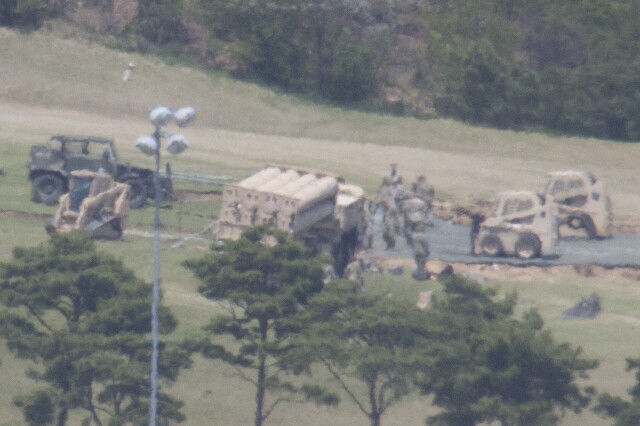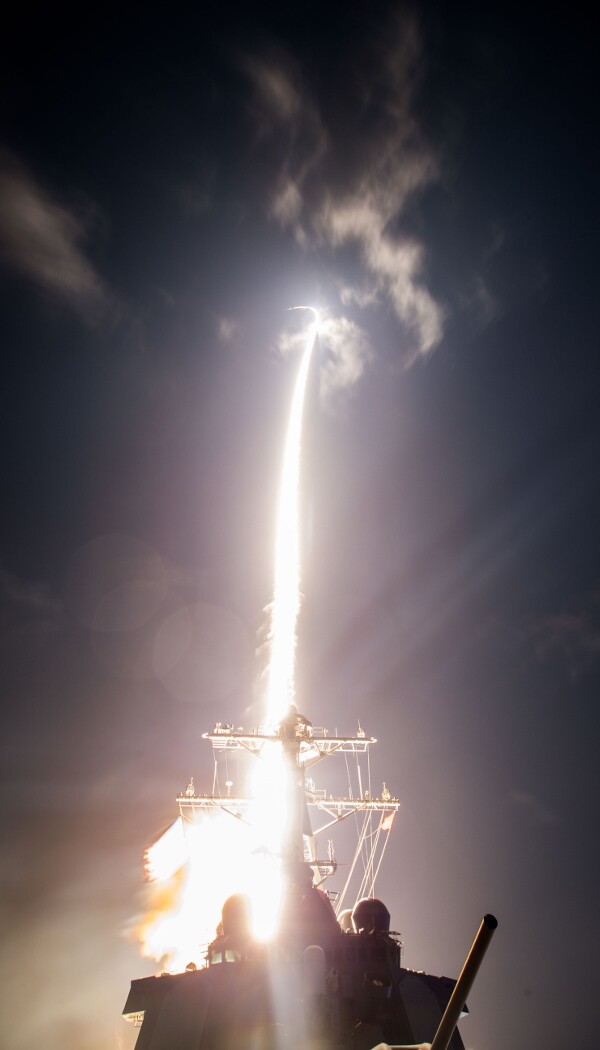hankyoreh
Links to other country sites 다른 나라 사이트 링크
Japan reportedly to deploy Aegis Ashore system instead of THAAD

The Japanese Ministry of Defense reportedly plans to defer deployment of THAAD in favor of an Aegis Ashore system.
The Asahi Shimbun newspaper, citing anonymous government sources, reported on June 23 that the ministry had asked the Japanese government to reflect the costs of deploying Aegis Ashore - a land-based form of Aegis missile defense system - in the 2018 budget. The 2017 Japanese government budget includes funds appropriated for preliminary investigations of possible deployments of both THAAD and Aegis Ashore.
But the Ministry of Defense now plans to request that THAAD-related costs be cut from the 2018 budget and only Aegis Ashore-related costs be included. The ministry appears set to officially decide on Aegis Ashore as a suitable ballistic missile defense (BMD) system for Japan next month, the newspaper reported. Defense Minister Tomomi Inada is currently coordinating plans with the US to visit an Aegis Ashore testing facility in Hawaii next month.
As recently as last year, the ministry was weighing introducing both THAAD and Aegis Ashore. In the past, Japan has had a twofold BMD system, with Aegis-equipped vessels positioned at sea to attempt primary interception outside the atmosphere using SM3 missiles, and land-based PAC-3 missiles to attempt interception of missiles once they have entered the atmosphere. An additional third system for intercepting missiles at high altitudes has also been discussed.
The ministry’s preference of Aegis Ashore over THAAD for defense against North Korean missiles comes down to cost-effectiveness.
THAAD has an interception radius of around 200 km, while the SM-3 Block 2A interceptor scheduled to be used with Aegis Ashore has a reported interception radius of over 1,000 km. According to the ministry, six THAAD launchers would be required to defend Japan’s entire territory, compared to two with Aegis Ashore. A single THAAD launcher costs upwards of 100 billion yen (US$898.6 million), while an Aegis Ashore launcher is expected to cost around 80 billion yen (US$718.9 million).

While US Forces Korea is responsible for deployment costs and management of the South Korean THAAD system, the Aegis Ashore system in Japan would be paid for by the Japanese government and managed by the Japan Self-Defense Forces, with the US military operating THAAD X-band radar installed in Aomori in northern Japan and Kyoto in southern Japan.
The reason China has not reacted sensitively to Japan’s THAAD radar is because of the country’s distance from the Chinese mainland.
“The SM-3 Block 2As that Japan plans to use with Aegis Ashore are weapons jointly developed by the US and Japan, which makes them cheaper than importing something the US developed,” explained one security expert.
“They’ve also acquired some knowledge of the SM3 because the Japan Maritime Self-Defense Force is already using it with its Aegis warships, which was probably a consideration,” the expert said.
The performance of the SM-3 Block 2A jointly developed by the US and Japan is not perfect. NHK reported on June 23 that a US interception test with the missile in Hawaii on June 21 had failed to take down its target. Development of the SM-3 Block 2A has been under way since 2006, and a successful interception was carried out in a February test.
By Cho Ki-weon, Tokyo correspondent
Please direct questions or comments to [english@hani.co.kr]

Editorial・opinion
![[Column] Park Geun-hye déjà vu in Yoon Suk-yeol [Column] Park Geun-hye déjà vu in Yoon Suk-yeol](https://flexible.img.hani.co.kr/flexible/normal/500/300/imgdb/original/2024/0424/651713945113788.jpg) [Column] Park Geun-hye déjà vu in Yoon Suk-yeol
[Column] Park Geun-hye déjà vu in Yoon Suk-yeol![[Editorial] New weight of N. Korea’s nuclear threats makes dialogue all the more urgent [Editorial] New weight of N. Korea’s nuclear threats makes dialogue all the more urgent](https://flexible.img.hani.co.kr/flexible/normal/500/300/imgdb/original/2024/0424/7317139454662664.jpg) [Editorial] New weight of N. Korea’s nuclear threats makes dialogue all the more urgent
[Editorial] New weight of N. Korea’s nuclear threats makes dialogue all the more urgent- [Guest essay] The real reason Korea’s new right wants to dub Rhee a founding father
- [Column] ‘Choson’: Is it time we start referring to N. Korea in its own terms?
- [Editorial] Japan’s rewriting of history with Korea has gone too far
- [Column] The president’s questionable capacity for dialogue
- [Column] Are chaebol firms just pizza pies for families to divvy up as they please?
- [Column] Has Korea, too, crossed the Rubicon on China?
- [Correspondent’s column] In Japan’s alliance with US, echoes of its past alliances with UK
- [Editorial] Does Yoon think the Korean public is wrong?
Most viewed articles
- 1‘We must say no’: Seoul defense chief on Korean, USFK involvement in hypothetical Taiwan crisis
- 2Will NewJeans end up collateral damage in internal feud at K-pop juggernaut Hybe?
- 3[Column] Park Geun-hye déjà vu in Yoon Suk-yeol
- 4Why Korea shouldn’t welcome Japan’s newly beefed up defense cooperation with US
- 5Thursday to mark start of resignations by senior doctors amid standoff with government
- 6N. Korean hackers breached 10 defense contractors in South for months, police say
- 7[Guest essay] The real reason Korea’s new right wants to dub Rhee a founding father
- 8[Column] ‘Choson’: Is it time we start referring to N. Korea in its own terms?
- 9Kim Jong-un expressed ‘satisfaction’ with nuclear counterstrike drill directed at South
- 10[Editorial] New weight of N. Korea’s nuclear threats makes dialogue all the more urgent